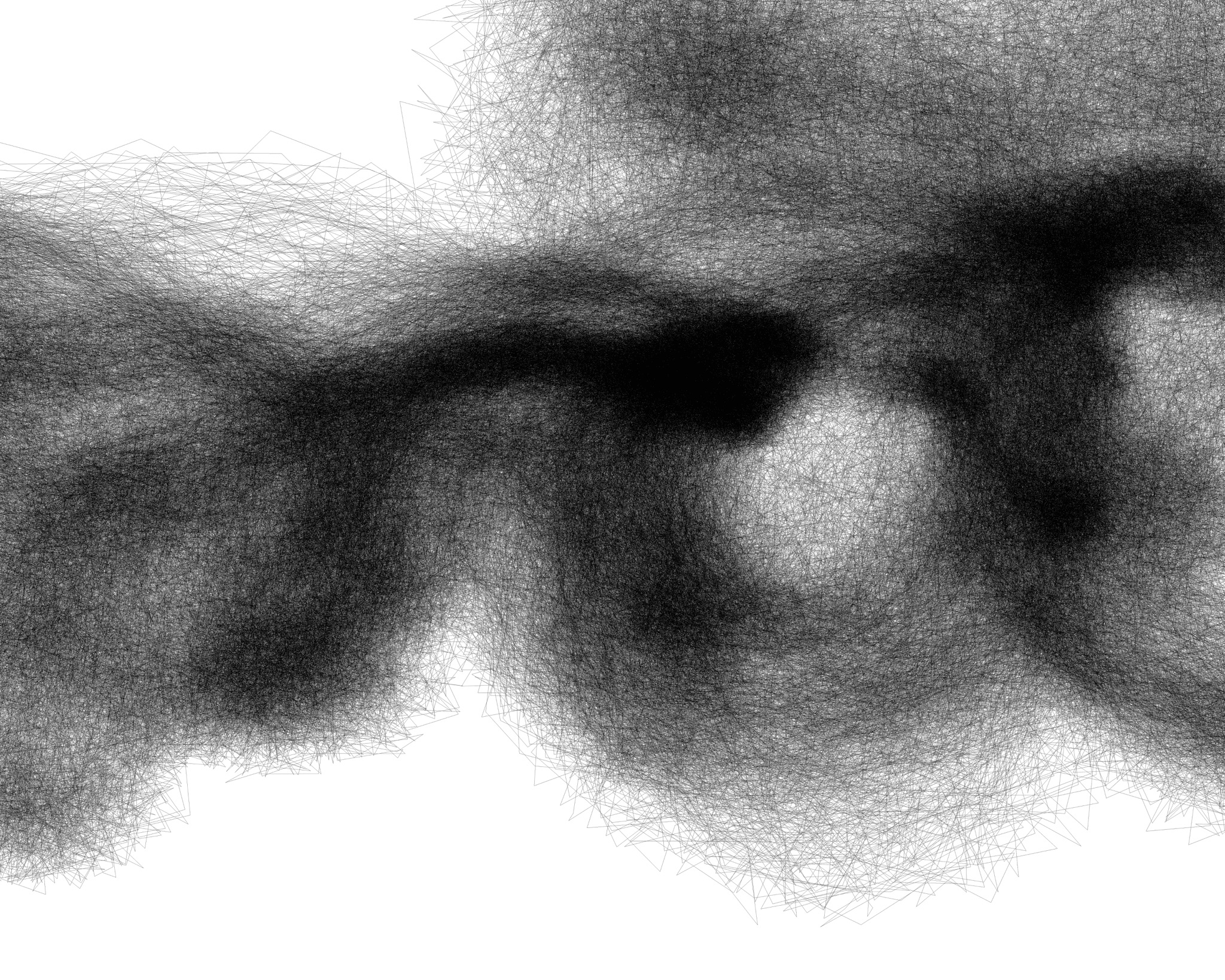Frank Mauceri: playing with perspectives in art
October 19, 2018
 Courtesy of Frank Mauceri
Courtesy of Frank MauceriBlack and white lines converge and juxtapose to form patterns—chaotic, dynamic and full of movement; the artwork of Frank Mauceri, senior lecturer in music, presents a touch of novelty and surprise. Viewers would never guess that behind the complex mark-making of Mauceri’s artwork lie algorithms generated by careful computer programming.
Mauceri will be displaying seven computer-generated prints at an exhibition at the University of Maine-Augusta titled “Above, Below, Before, Behind, Within.” His carefully selected pieces provide a unique perspective on the relationship between computer programming and visual and audio elements.
To produce the drawings, Mauceri works with a computer program which simulates a virtual arm that moves in various directions according to his command. By coding simple, periodic functions, he is able to define the angle, location and various spatial settings of the three-dimensional model.
“So, in essence, it’s like I’m flying a camera around a model, and I take a picture at locations where I like the view,” he said.
After studying music composition and art theory at Oberlin College, Mauceri earned a doctorate of musical arts from the University of Illinois, Urbana-Champaign. In addition to teaching, Mauceri works as an artist, saxophonist, composer and jazz musician. His projects are often collaborations with other dancers, singers, instrumentalists and video artists to experiment with digital signal processing and sensor technologies.
Although Mauceri has worked with computer programming in music before, his inspiration for using generative systems to create artwork emerged when he taught Interactive Media for the Arts at Bowdoin. Through developing demos for the class, he found a way to make visual works and animations.
“This is the case where teaching a course and working with art students taught me a new creative practice,” said Mauceri.
Mauceri’s work was noticed by Susan Bickford, a then-curator for the gallery and professor for visual arts at University of Maine-Augusta. Bickford focused primarily on artists who produce work from a variety of media.
In the exhibition, five Maine artists engage with the theme in five distinct media: algorithmic drawings, painting, portrait photography, installation and video performance. As the name “Above, Below, Before, Behind, Within” implies, the exhibition allows the artist to place the viewer in many perspectives. Each piece raises questions about the role of the viewer in art through different vantage points.
“There’s a unifying idea that every artist is working out problems of particular perspectives from a visual point of view. It’s looking from above, looking from below,” said Mauceri.
For this exhibition, Mauceri will showcase works from his ongoing project called Snarl, which he began three years ago. The pieces in the Snarl series are generated in a similar manner and have a three-dimensional quality. Each piece explores connections between harmonic relationships and the gestures of drawing.
“I am fascinated by the creative potentials of generative systems, and I depend on being surprised by the traces they leave. I am often inspired by the musical processes and processes of human interaction,” said Mauceri in a written statement to the Orient.
Unlike other artists, Mauceri does not know what his artwork will look like until the end, imbuing his creative process with surprise and an element of chance.
“I can make some predictions, especially when I know the mathematical relationships between the functions that I’m using to control the drawing. Often times, I don’t expect the patterns that emerge. Sometimes it’s not very interesting, and I adjust the code,” said Mauceri.
Although Mauceri often uses the same simulated object for several different prints, a different generative system can produce a completely different perspective. Mauceri uses this technique to explore different points of views that play into observing the same object.
“Creative potential of processes is an invitation for people to think about systems and processes that has creative opportunities,” he said. “By designing systems and playing with processes, we can create alternatives in the way we see the world, alternatives in the way we interact with each other.”
The exhibit “Above, Below, Before, Behind, Within” is on display through November 7 at the University of Maine-Augusta.

Comments
Before submitting a comment, please review our comment policy. Some key points from the policy: